– Good evening and thanks for coming to the Space Place tonight. It’s the second Tuesday of the month so as always we have a presentation tonight for you. Tonight is a little different because we have two speakers. My co-author here is Tony Lattis, who some of you will probably guess I’m related to. And Tony will be doing the second part of the talk, and you’ll see his contribution to it will be evident from the kind of things that he’s going to talk about. So we’ll switch over them when we get to that point, thanks Tony.
So the program tonight is about a couple of things.
It’s in part about the centennial of the International Astronomical Union, which was founded in 1919, a hundred years ago this year.
But the talk itself actually springs from a set of negatives, that we found in the UW Archives. And at first it was an envelope full of negatives, a little bit dusty, clearly old. And they were among the documents and personal effects that are in the Archives, that had belonged to Joel Stebbins, who was the director of our observatory from 1922 to 1948. So I figured they were associated with Stebbins in some way. And as I looked at them a little bit more, I saw Stebbins in a couple of these pictures. It took me a little while to connect them with the founding of the International Astronomical Union, but it turns out that’s what they were documenting: the photographs from 1919, from the founding meeting of the International Astronomical Union. And 1919 was of course less than a year after the end of, the summer of 1919, less than a year after the end of World War I, the Great War. And this turns out to be manifestly evident in the content of the photos themselves. So that’s the talk then, is about this set of photos, and the connection to the founding of the International Astronomical Union. So just in case, for those of you who are not intimately familiar with the International Astronomical Union,
it’s the foremost international organization for astronomers and quite important in the profession of astronomy. You can see a lot of the things they do there. Among other things, they have outreach and communication roles but they also have technical roles that they fulfill for the profession of astronomy. The establishment of fundamental astronomical and physical constants and coordinate systems. All the kinds of things that astronomers need to be able to exchange data internationally. These things were not standardized before the IAU. One might have to convert from one country’s system to another, that sort of thing. They come up with nomenclature. For example, if anybody’s ever told you there are 88 constellations, that’s just the number that the IAU settled on, actually in 1921. But that’s a definition from the IAU. That’s where it comes from. And they also assign names. If you want to have your name attached to an asteroid, or a crater on the Moon, you have to get them to do that for you. They’re the ones who standardize nomenclature, and they also decide what’s a planet and what’s not. You might remember Pluto, that was the IAU that came up with a definition which ended up excluding Pluto from the category of planets. Another topic entirely, but that’s the kind of thing they do, that’s the organization we’re talking about.
So the founding of this 100 years ago, they’re making quite a lot of that, this year, the IAU themselves. You can see that logo up there, “100 Years Under One Sky.” There’s a lot of IAU programs and information that you can look up easily on the web.
The way that this came about involved of course American astronomers as well as European astronomers. And it started actually before the end of the war. There were–
In the Fall of 1918, about a year before the end of the war,
scientists in the U.S and England and France, basically in the Allied countries, began planning, in a very preliminary sort of way, for post-war science. There had been international organizations of one sort or another before the war. For example in astronomy, one of the most important, was the German organization Astronomische Gesellschaft, and it was a vital organization for some of the things, that the functions of the IAU would eventually take over. But among the Allied countries, it was really important that after the war, that the scientists of the Central Powers, of the enemy countries, Germany and Austria primarily, and as a scientific power really Germany, that they be excluded after the war, because there were of course hard feelings, as you probably know.
Well, the plan that they came up with late in 1918, was to have a meeting, an international conference, in Brussels, and this became possible, in late 1918, as it was clear that the war was going to wind down.
The Allies became pretty confident that Germany was going to leave the war one way or another.
The plan was, the plan that evolved was to meet in 1919, in Brussels, and form something called the International Research Council. The International Research Council would be an umbrella organization. Within it there would be unions, what are called unions, as in the IAU, unions for the various sciences. So there would be a chemistry union, and a physics union, and a geophysical union, and an astronomical union and so on. That was the general idea. So they were going to then have an organization, have a conference to organize the organization. And Joel Stebbins was very much involved in these things as the photographs will reveal, although we know that from
other historical sources as well. The interesting things about the photos is not only that they document this founding of the IAU, but we get some insight into the activities and maybe even the attitudes and the forces influencing the opinions of these Americans who are now for the first time visiting the aftermath of World War I, in Belgium where most of the fighting, at least on the Western Front, was.
The photos are in Madison because Joel Stebbins was our observatory director here.
From 1922, until 1948.
He didn’t start out here in Wisconsin. He’s originally from Nebraska, but he did come to Wisconsin for one year as a graduate student at Washburn Observatory, and very quickly was moved out to Lick Observatory. George Comstock, his teacher, the observatory director here, urged him to transfer into a real graduate program, which meant in that case Lick Observatory at the University of California. After he finished his PhD, he became director of the University of Illinois observatory where he spent quite a few years, nearly twenty years there. And he was there as director of that observatory at the time of this conference that we’re talking about, the Brussels 1919 conference. And then in 1922, came here as George Comstock’s successor, and was here for the rest of his career.
A lot of the records from his time here are in our archives, of course, and we managed to have things also from the Illinois days including these negatives which he brought here and then didn’t take with him when he left and went to California, left it all there among the archive materials.
So the astronomers started preparing for this meeting in Spring of 1919, March of 1919.
And the convener so to speak, the person who set himself up to start the organizing was none other than George Ellery Hale, who’s a very famous name, an astronomer, many of you will know that name. And Hale acting under the authority so to speak of the National Academy of Sciences, put together a committee and called a meeting in March of 1919. Stebbins was invited to the meeting.
The connection there is that his thesis director, W.W. Campbell, was chosen as the chair of the executive committee, and Campbell wanted Stebbins as his secretary, his student, his former student. They had a preliminary meeting, and then shortly before the conference itself, they had another meeting in Washington, where the members of the delegation gathered and put together their last-minute preparations, before they literally got on the boat to sail to Europe.
Stebbins was designated again as secretary of the delegation, and as secretary, he would later publish an account of the meeting, as would Campbell who went there as head of the delegation. And you see, I’ll show you these names a little bit later, these are the names of the other astronomers, who are members of the American delegation, but I think I have a more explicit listing in another slide.
Campbell was important in many ways in the history of astronomy. He was particularly influential in this matter of post-war attitudes about science. Campbell had a son who was serving in Europe, in World War I. And Campbell was at one end of a spectrum of opinion and his end of the spectrum was extreme hostility to German scientists, who he considered guilty, and this was not an unusual opinion in particular, he saw German scientists as having contributed to German militarism and the war. They helped create poison gas and terrible weapons and things like that. And many people wanted to see Germany in many ways punished and certainly German scientists excluded from international participation.
At the other end of the spectrum, was a much more moderate view, represented by none other than Hale.
Hale was very interested in seeing international cooperation, especially with Germans, who were an important scientific power.
Very important in astronomy and various other sciences of course. He wanted to see these things mended as quickly as possible. It isn’t that he didn’t share a certain amount of this annoyance with German scientists for having been on the wrong side of the war, but he wanted to patch things over quickly. So there was a fast-track to patching things over, and there was a slow-track,
which was represented by Campbell. Stebbins turns out to have been somewhat intermediate there. Remember that he is a former student of Campbell’s. Campbell got him the job at Illinois. Soon after this meeting, Campbell would get Stebbins inducted into the National Academy of Sciences. Campbell’s opinion of Stebbins was really important to Stebbins.
But so was Hale’s and in fact Stebbins would work quite directly with Hale in succeeding years.
So how did Stebbins navigate between these two extremes of opinion? Well, before this trip to Belgium, as far as I can tell in any of the correspondence or publications, he never talks about it, he never takes any stand on this. But after this trip to Belgium, he does express sympathy with Campbell, and this may be a result of his experiences during the trip. Although it’s also really interesting that he would never come out in print, as Campbell would, and condemn German science. He would express it only in private correspondence.
Specifically says to Campbell that he would not initiate the resumption of post-war relations with our old friends. Stebbins had spent a year as a sabbatical in Germany, in Munich, working with a number of German scientists. And there were German astronomers who had very close and overlapping interests with Stebbins. That would have been very important for him to maintain relations with those people one way or the other. So it’s kind of interesting that while he expresses sympathy with Campbell’s view, he doesn’t go all the way with Campbell’s view, and in fact within just a few years after the end of the war, Stebbins is hosting German scientists in Madison by that time, and in full engagement with the former enemy astronomers there. So he seems to have been doing sort of a middle view, of a middle road there. The trip may have been influential in certain ways, and we’ll get to that a little bit later.
Just real quickly, the American astronomers who went to this meeting included of course Campbell, who I’ve mentioned already, and Stebbins, the secretary.
And then in the third row there, Walter Adams, Frederick Seares, and Charles St. John, who were all astronomers at Mt. Wilson Observatory.
Hale was the director of Mt. Wilson Observatory, so these guys all worked for Hale. Hale’s not in the delegation. I’m not sure why Hale didn’t go along to this pretty important meeting. There must have been something else detaining him. So he sent three subordinates to look out for the interests there. And then we have Benjamin Boss, Samuel Mitchell… Boss from Albany, New York, and Mitchell from the University of Virginia.
Frank Schlesinger, the Allegheny Observatory in Pittsburgh. And Philip Fox, who was the director of the Dearborn Observatory, not far from us, in Evanston, Illinois, basically in the Chicago area. Fox was already in Europe as it says there. He was actually serving in the Army. It’s kind of interesting to look at this list. Notice the predominance of observatory directors. They’re all observatory directors, except for the three guys that Hale, the observatory director, designated to go along, from Mt. Wilson.
There’s a little bit to be said here, which I’m not going to go into, on the change in the structure of astronomical science, from early in the century, when many observatories, including our own, were, although usually associated with the university campus, were very often independent research institutes with a powerful director who you could liken to the captain of a ship or something, who would just set a direction, assign tasks, and run the place like his own operation. Not the sort of the collegial, departmental relationship that we typically have now in astronomical science and at observatories. So the directors were very powerful, and observatories took on the character of their director inevitably. We also see a mixture here of what would become– Well even in those days was being called astrophysics, kind of a new approach to astronomy. And the representatives of that are Campbell, Stebbins, and Hale’s guys. The rest of them are all associated with what’s called positional astronomy, sort of an old style of astronomy that depended primarily on very careful measurements of the position and motion of objects in the sky, which had an important bearing on the astrophysics. For example the motions of a star can tell you about the distance, what’s called the parallax of the star. You have to understand the motions of the star very well to measure the parallax, and that will then turn into the distance of the star, and from there you can talk about the physical properties of the star. So it isn’t that these two fields of astronomy aren’t closely related, but the emphasis of the research of these institutions was all on the positional part, not on the physics part. Hale was a physicist and was very interested in applying physics to astronomical problems.
So, they set sail on the 30th of June, aboard the Aquitania, which was the sister ship of the Lusitania, which had been torpedoed by a German submarine, not too long before, well a couple of years before. The Aquitania was one of the great liners of the day, and the delegation, most of them, Fox was already in Europe, are depicted here on the ship, on the way over. Now there are a couple of things that are interesting here. First of all, I haven’t mentioned the two women who you’ll see over and over again along on the trip. On the left there, so I’ve labeled the others, you’ve seen the other names up there. But, the lady on the left is Elizabeth Campbell, who is the wife of W.W. Campbell, who is directly behind her. And then to our right of Elizabeth Campbell, is Dorothy Mendenhall, who I’ll have more to say about in a few minutes.
So far what you’ve seen are negatives from that envelope of things in the archives. As I mentioned, Joel Stebbins published an article about the trip and about the conference.
A number of the photographs that he took, were published in that article. So it says Stebbins 1919, Popular Astronomy. If you go to Popular Astronomy 1919, and look at page 603, you’ll see a picture that looks very much like this, except Joel Stebbins is in the picture.
So, there he is on the right.
Here’s Stebbins. So you’ll notice that all they’ve done is rearrange themselves a little bit to make room for Stebbins there to slip into the picture, right? So presumably, and I’m presuming in a lot of these cases,
Stebbins takes this picture, and then he doesn’t use it for the article, so it stays in the envelope. Then he has somebody else take a picture with his camera, steps in, and this is the one that gets published. He gets himself into the group photograph, that also goes into the article, in Popular Astronomy. There’s a couple of pairs like this, where you’ll see a close resemblance between a photograph that’s not in the article, and one that is.
Here they are. This a better picture of members of the group. They’re on some kind of a tour, and we’re going to talk about their touring in just a little bit. But notice now, and you would’ve noticed– I didn’t point it out in a previous picture– The first one I showed of Stebbins– Stebbins was holding a camera in his hand. I should’ve mentioned that earlier, but here you see Dorothy Mendenhall holding a camera. So whenever there’s a picture of a camera, there’s got to be at least two cameras. So there’s two cameras along on the trip for sure, and then maybe two photographers. And I’ve speculated that maybe Dorothy Mendenhall was the other photographer, but I was just recently talking to an antique camera specialist, and telling him about the multiple cameras and photographers, and he said well actually, any serious photographer would probably have carried two cameras in those days, so they might both be Stebbins’s. I don’t know.
But Dorothy Mendenhall is holding one of the two cameras, the minimum of two cameras there. And then someone else you haven’t seen a picture of– And Stebbins is right there, looming in the background. In these days, he’s sporting a mustache and a goatee. And so he’s easy to pick out of the crowd. This is Philip Fox, who was already in Europe. Philip Fox was already an Army veteran at the time of World War I, because he had served in the Spanish-American War, and he would also serve in World War II. So as astronomers go, quite an experienced military man. And then we also have some famous British astronomers here who are going along with the Americans in the group, including Frank Dyson, who was the Astronomer Royal, and director of the Greenwich Observatory in those days. And then a couple of associates here, a guy named Cowell, and a guy named Newell. I think Newell was from Cambridge, not Greenwich.
So, one of the reasons that got me really interested in this, and to turn into a bit of a talk, was the many local connections that begin popping up. So Philip Fox, I already mentioned, was actually from Kansas originally, but was the director of the Dearborn Observatory in the Chicago area.
Another one, I forgot to point him out over here, is Charles Mendenhall, right here. So this is Dorothy Mendenhall, and this is her husband Charles. Charles and Dorothy were Madisonians, at this point in their life. And so Charles Mendenhall is there, a physicist, who was there to help with the founding of the International Physics Union. Dorothy Mendenhall, Dorothy Reed Mendenhall, and then of course Stebbins, who had been a Madisonian and would be a Madisonian again after 1922.
The Mendenhalls are a very interesting couple. Dorothy Mendenhall in particular is a fascinating person. She was one of the first women in the United States to receive a medical degree, an actual medical degree, from an actual medical school. And she was the first woman to hold a medical research fellowship at Johns Hopkins University, right after getting her medical degree, her MD.
And, she made good use of that, in 1902 she was the discoverer of one of the diagnostics of Hodgkin’s Disease, which is called the Reed Cell, because Dorothy Reed Mendenhall discovered it. That was before she married Charles.
Which she did in 1906.
Charles was already at the University of Wisconsin as a professor,
and was promoted to full professor in 1906. And I don’t know if Dorothy was holding out for that. But 1906, they got married and she moved to Madison with him.
Here she was distinguished not really as a pathologist, which was what her earlier research had been. She was not at the UW Medical School, but she got into pediatrics, and became very influential here and founded the first pediatric clinic in Wisconsin, here in Madison, although it was not a UW clinic, it was actually a private clinic that along with some other physicians, founded. She did teach at UW, she was a lecturer in the UW Home Economics Department on child development, as it says there.
And, this had really great effects on the health of children in Madison.
I don’t know that we can draw this all that directly to Dorothy Mendenhall herself, but she was involved in this movement, which by 1934, had produced in Madison, the nation’s lowest rate of infant mortality in cities of that size, so she was an important certainly part of this institution that was distinguished here in Madison.
During World War I, Charles was doing military research, in Washington, D.C., and at the time of this trip, they were actually living in Washington, D.C. So Dorothy would’ve been there in 1918, 19.
They had two sons, who were both quite distinguished. John T. Mendenhall became a professor of surgery at our medical school here, and Thomas C. Mendenhall was a quite distinguished academic as well as you can see there, a professor of history, and president of ultimately, Smith College. Dorothy Mendenhall lived in Madison until she retired sometime after World War II when she moved to live with one of her daughters, who was I think in South Carolina. Charles Mendenhall was a very distinguished physicist as well, also from Johns Hopkins. So they were at Johns Hopkins together. Although it turns out that they had known– their families had been friends, and they had actually sort of grown up together, knowing each other, that is Charles and Dorothy. In 1901, he came to Madison as a physics professor. As I mentioned, he was working for the Army during the war, quite distinguished as you can see, elected to the National Academy of Sciences. And then died relatively young, I think at the age of 61 or so, in 1935. So Dorothy was widowed at that point, but continued to work in Madison for many years until she retired after World War II.
So some nice connections of Madisonians who were present at the founding of the IAU and are in these photographs of Stebbins’s. By the way, so Stebbins got here in 1922, and worked with Mendenhall. They had common research interests, here for quite a few years. So we got a little bit beyond Belgium 1919, let’s go back. They arrived in London, the Aquitania docked in London. And then they took a ferry across the English Channel to Ostend, in Belgium, which was the port up there, And if you read Stebbins’s account, he talks about how they found the port city quite damaged. They’re here at the train landing, the train station was still functioning though, and they needed to get the train in order to go to Brussels, from the coast, from Ostend there, and these are both Stebbins’s photos.
This building actually still stands there. It’s been fixed up quite nicely, but it’s still there as part of the port at Ostend, and part of the train terminal which you see in the arc across right there.
This is another one of those pictures now from Stebbins’s account, this is one of the negatives that went off to Popular Astronomy, and never got put back in the envelope. So again we can compare them on the train platform here at Ostend and here they are again. The grouping has changed a little bit of course, the Campbells are in there, but they’re standing on the train platform there at Ostend on their way to Brussels.
So they got to Brussels and Stebbins is still taking snapshots in Brussels. The delegation stayed at the Grand Hotel Brittanique,
in Brussels, and this building no longer exists. So, this is a photograph you can’t take anymore. But that’s the hotel where they stayed. They were at number three, and it was a five-minute walk, it’s actually kind of just a big plaza, a big square, that you can walk across to the Palais des Academies. And so this was a convenient location, a five-minute walk from where the meeting was held. And here they are. This is the address. Three on Place du Trone, where the Hotel Brittanique was. See the three right there? So here’s the group posing, some of the group posing in front of the hotel there. You see them, some of them there are not astronomers, there’s a couple of other scientists who are there for the IAU, these are probably all Americans. But I can’t say that for sure because I don’t know who this guy was. And also, this guy is George Van Biesbroeck, who is a future American.
Biesbroeck turns out to be another Wisconsin connection here in this meeting and these photographs. He’s still referred to, down at Yerkes as Van B. He’s still remembered there because he spent nearly 50 years as a resident of Williams Bay.
He was originally working at the Belgian Royal Observatory just outside of Brussels, 1904 to 1914. 1915 the war is now fully geared up, and lots of European scientists were looking for places in the U.S, and Van Biesbroeck managed to make a connection to Edwin Frost, at Yerkes Observatory, the director, and was able to come to Yerkes Observatory to work there for a little while and moved his family to Southern Wisconsin in June 1917.
The Belgian astronomer Chris Sturken, a modern astronomer, actually told me a great story. He met Van Biesbroeck, who in his late retirement years was in Tucson, Arizona, and Chris as a young guy ran into Van Biesbroeck there, they’re both Belgians, and asked him about those years. Chris says that Van Biesbroeck told him that the German occupiers had actually offered him the directorship of an observatory that they would build for him there in Belgium,
And that was apparently when he really started packing his bags really hard to get out of there and moved his family out of there. He didn’t want to be involved in that. They had conquered Belgium of course so he was not happy about that. But he had returned briefly to Belgium in 1919, in order to complete whatever arrangements he needed to, I don’t know what kind of bureaucracy there might have been involved. He was back in Brussels in 1919 to complete this transition to the U.S. and it worked out that he was at the meeting at the founding of the IAU. And spent then the years from 1915, really, with breaks, until 1945, as an astronomer at Yerkes Observatory, became a U.S. citizen and so spent nearly 50 years as a Wisconsinite, as a Wisconsin astronomer, working for Yerkes Observatory, run by the University of Chicago in those days. So Van Biesbroeck, a very interesting guy, and as I mentioned he’s still remembered there, people who still knew him in Williams Bay. There he is at the Yerkes 40-inch telescope there. Alright just real quickly I mentioned that Stebbins took various pictures of the surroundings.
The Palais des Academies is just off of the edge of the photograph here, but walking from the no longer existent hotel to the Palais des Academies, where the conference was, you would go by the old Royal Stables, which is what this building is. So this is a picture of the old Royal Stables, which is now the archive building of the Palais des Academies in Brussels. And there is no picture in the negatives of the site of the meeting and that’s because Stebbins sent that negative off and it was published in the Popular Astronomy article that I have mentioned there. So yet another one of the negatives that never came back, but clearly in the same set with these other ones of the hotel and the Royal Stables.
They also visited various places during the trip, and Tony’s going to talk a little bit more about that. One of the places they went, of course, was the Belgian Observatory, the Belgian Royal Observatory, which was just outside of Brussels, still is just outside of Brussels, the historic observatory. And that was where Van Biesbroeck had been just before the war.
They took a number of trips. And so the rest of the pictures are going to be illustrations from the trips that they took outside of Brussels to see the war-torn countryside in Belgium, and they did some of these by automobile, as you can see, because here they are.
This turns out to be in front of a hotel building which is still there, you can still find it on Google Street View actually. And there they are in their touring car.
And you see Stebbins right here behind the wheel. Let me turn back on the pointer here. You see Stebbins here behind the wheel. And then the Campbells here. Mrs. Campbell, Elizabeth Campbell and William Campbell and some of the other astronomers identified down here. And Stebbins was a little bit of a practical joker, and one of his students, Gerald Crohn says, “You should always look for the joke “in a Stebbins photograph.”
In this case, the astronomers there are parked in their car directly outside the hotel, which is the Htel De l’Univers, so these are the astronomers in front of the universe. Sounds like a Stebbins joke to me.
So here they are on their road trip, and I think this is where I will turn it over to Tony to talk about some of the other photos and the astronomers’ travels in Belgium.- We’re just going to talk a little bit about the various places that the astronomers went on the weekends, they took two trips on Sunday as well. They were in Belgium and what those places were, how we went about figuring out where those photographs were taken, and what that sort of means for all of this. So just for context, I wanted to kind of put together a map to arrange where these things were. That’s where we’re looking, Northern France, Belgium, south of the Netherlands there. So this is a map that I put together, and I’ve dropped a pin down everywhere that we have photos that we know for sure they were in this place. So you can see they really traveled pretty widely around these areas. We already talked about Ostend, the port that they arrived at. You can see up in the top. And then so I’ve shaded in both the countries, so where it goes from blue to yellow there we’re looking at the international border. And then in red is the area, so luckily this map was historiated with the front at different times. So that’s sort of the outer extent of where fighting was during the war. And you can see that there are a couple of places that they went that fall right in the center of heavy fighting in France. But there are a bunch of places that they went that aren’t close to the front at all. So I kind of wanted to talk about why they were going to these other places: Louvain, and Liege, and Dinant, which are all sites of famous German war crimes or I should say notorious German war crimes during the occupation.
So we’ll start with Louvain. So you can see from the picture that it’s like not particularly easy to tell what this is, just right off. And so one thing that I started to do was just look through printed photographs, postcards, other things like that, to see if I could find the same buildings. Any photo that Stebbins had that had a building in it, I just sort of started looking for these.
This one it turns out is the Catholic University in Louvain, and so you’re standing here on the great big market square there and looking at the facade of the building is just out of the frame, but the part on the side is the part that burned down. And this is the site, like I said, of a notorious German war crime in Belgium. The library of the university here was burned down in the early part of the occupation.
And this was a major part of like the early American and British propaganda about the war, was talking about these crimes against culture that the Germans had perpetrated across Belgium. And I think like any good propaganda, that’s halfway true.
The library in Louvain there was a really old historical library with tons of art and manuscripts and stuff like that. Most of that was gone already by the time that the Germans got there during the era of secularization in Revolutionary France, most of this stuff would have been packed off to Paris and to Brussels. So yeah the library was burned and that’s not a great thing but also sort of not the way that it was portrayed in the West.
Next is Dinant.
I got a good clue about both of these places because Campbell writes about them. Campbell writes that they took trips to Louvain and Dinant. He calls them places made famous by culture, which he didn’t mean in a nice way.
Dinant is the site of another famous German war crime. You can see this is the modern memorial to the Massacre of Dinant, where 600 or so civilians were executed for shooting at German soldiers from houses, although it’s of course disputed that that ever happened in the first place. But I wanted to kind of point out with these photographs that, and you can see from this photograph, that this isn’t really war damage, this is occupation damage. You can see there are a lot of the building with the kind of two triangular roofs is what actually identified this photo to me. You look, this building is still there, has been repaired.
But the roofs and the sort of internal parts of the houses are burned out, just the facades are left. But you can still see trees and features in the ground, so it’s not really battlefield damage like this. This is what Stebbins’s photographs of battlefield damage look like. And you can see it looks like the Moon. There’s just nothing there. Apparently, or I’ve, you know, read these accounts where people who were experienced said that the artillery fire would just sort of churn up the soil and really would remove any kind of features from them. You can see that any of these trees above a certain height have been completely obliterated. But I think it’s interesting, you can see that the communication towers are already up. So they had been hard at work in Belgium putting back up lines of communication in July already.
So, there are some more tangible signs of conflict as we start to get closer to the front lines.
This is a place called Bonavis, which is just south of Cambrai. Which, if you’re familiar with tank engagements in World War I, will ring a bell. We could tell right away from this photo by the shape of the tank that it was probably a British tank, and it’s got its number on the side there. It’s either F52, or FS2.
And then also it’s got an autograph from the German military on the side. So they wrote erobert, to their conquered, right? By the Second Army. So those are two really great pieces of evidence that this photo somewhere in the region of Cambrai. But for a second opinion we just sort of sent a hail mary e-mail to the Tank Museum, which I think is in Bovington, England. They have an English Tank Museum. So we sent them the photograph, and they sent back a nice little regimental history for unit F52, which was deployed in the area of Bonavis during the Battle of Cambrai. It did a couple of things that were recorded and then it had a mechanical issue and was abandoned. Which is kind of a different story than what the Germans wrote on the side of it. So I don’t know whose version of events is true, but that’s just sort of an interesting thing here.
So the delegation was led on their tour of the front sites by Stratton, Frederick Stratton, who was an English astronomer, who had served on the front. And I think it’s Campbell who writes that they saw many of Stratton’s homes
while he was deployed, which ranged from chateaus to holes in the ground. So, no pictures of chateaus but here are some holes in the ground. I don’t know if they belong to Frederick Stratton or not.
And then–
The most interesting photos to me, at least, are these from Pronne. This is the St. Johns Church in Pronne. So Pronne, if you remember from the map, is right in the center of where all of the fighting was. And it’s one of the few big cities that was really completely enveloped by this. And the destruction there was really, really heavy. You can see how this church has been reduced to almost nothing. But interestingly, Stebbins took this photograph of the Htel de Ville, which it turns out is actually a super famous photograph. Not Stebbins’s photograph, but the Htel de Ville. Here it is on a postcard that’s up in the Special Collections of the UW Library.
And people love to photograph this. There’s all kinds of different photographs. If you Google the Htel de Ville in Pronne, you will find this picture from this angle, standing there.
I think it’s probably became really famous because of the sign that’s on there. It says, “Nicht rgern, nur wundern.” Which is sort of like “don’t be angry, just be amazed,” I guess. And we’ve sort of debated what the context for this could possibly be, it seems like that sign could mean a very different thing if you’ve just blown up a building or maybe if you’ve been fighting over a blown-up building for four years, it takes on sort of a different meaning. The postcard says it’s a specimen of their mental feelings. I don’t know, I guess that’s about as good as you can get. But I do think it’s interesting that we’ve got precisely the same photo and some of them are kind of more striking than that, right? I mean here we have precisely the same photo again. This is Stebbins’s photo. And then this is from a postcard again from Special Collections. But this image is the Cloth Hall in Ypres, which, is really, became sort of iconic of destruction. Ypres was a really big city that was destroyed.
It’s not only sort of the center of modern war remembrance, but also sort of the center of memory of destruction. And the Cloth Hall, I think because the belfry, is really characteristic, you can understand why people wanted to take all kinds of photos of this. But I do think there is something going on here, which is that Stebbins, he’s not doing this alone, right? He’s doing this in context, he probably already knew, or somebody already knew that this was the good angle to capture this from. He’d probably seen pictures of this, and so went over there to capture his own, kind of participating in a more collective reckoning with the war. And it was sort of a cottage industry. That postcard from the last slide is part of this whole set, Ruins d’Ypres, which you would’ve bought at a tobacco stand or something like that. So, ruin photography is being sort of packaged as a consumer product. This picture that Stebbins took. I don’t know where this is, but I think you can sort of see the ruin aesthetic that he’s trying to capture there. So,
these sort of mementos, taking these things as a part of collective memory, is actually at work in this photo that Stebbins took as well. He took this in Villers-Carbonnel. And in sort of looking for this photo, obviously it’s got the place where it is, or was,
right on it, but in looking for what this place used to be before it was, and where it is, we actually found this sign which is in the Australian War Memorial in Canberra. So the Australians packed that sign off and took it back to Australia for their own memory of the war. So I just sort of want to conclude on the thought that what they’re doing, when they went out and went on these expeditions and took these photos, is sort of participating in a wider process of reckoning with the war, and not just the war in the places where it was fought, but also in the places that were politically important, right? It’s July of 1919, the ink is hardly dry on the Versailles Treaty, and so it was important for them to go and visit these sites of German war crimes and justify German responsibility for the conflict. So, when you’re looking at this photo, you’re not just looking at sightseers, you’re also looking at the course of international science and diplomatic relations being set in motion, and that will endure for decades after this. So, thank you.
(applause)
Search University Place Episodes
Related Stories from PBS Wisconsin's Blog

Donate to sign up. Activate and sign in to Passport. It's that easy to help PBS Wisconsin serve your community through media that educates, inspires, and entertains.
Make your membership gift today
Only for new users: Activate Passport using your code or email address
Already a member?
Look up my account
Need some help? Go to FAQ or visit PBS Passport Help
Need help accessing PBS Wisconsin anywhere?

Online Access | Platform & Device Access | Cable or Satellite Access | Over-The-Air Access
Visit Access Guide
Need help accessing PBS Wisconsin anywhere?

Visit Our
Live TV Access Guide
Online AccessPlatform & Device Access
Cable or Satellite Access
Over-The-Air Access
Visit Access Guide
 Passport
Passport


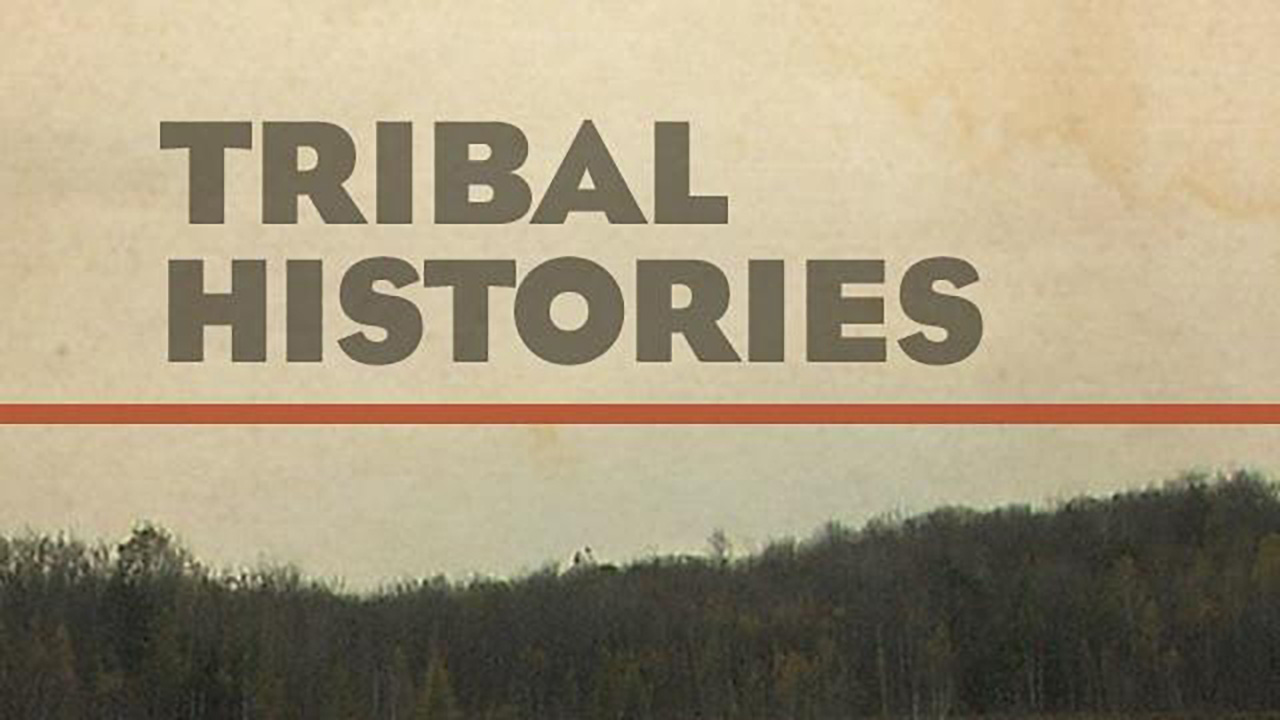
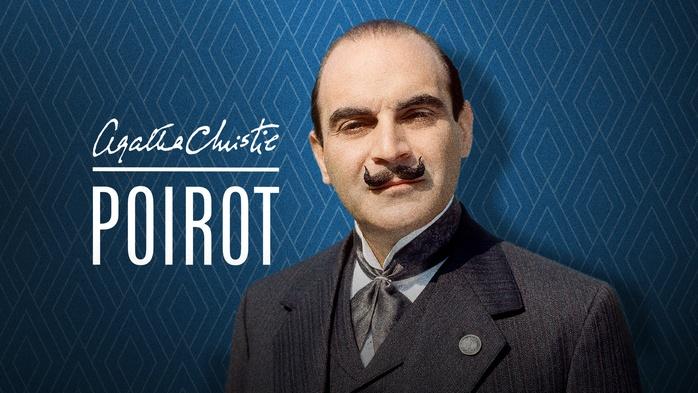

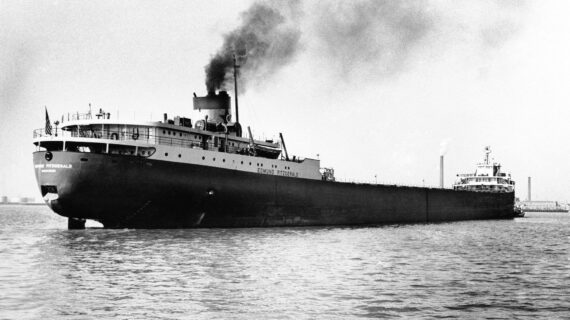


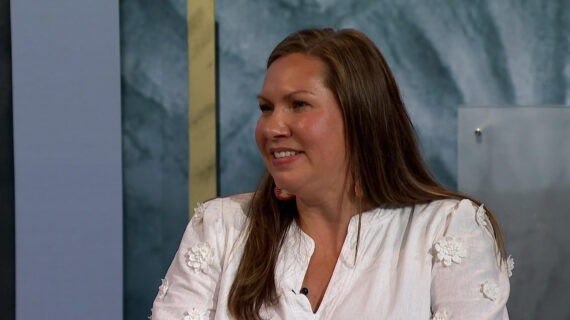
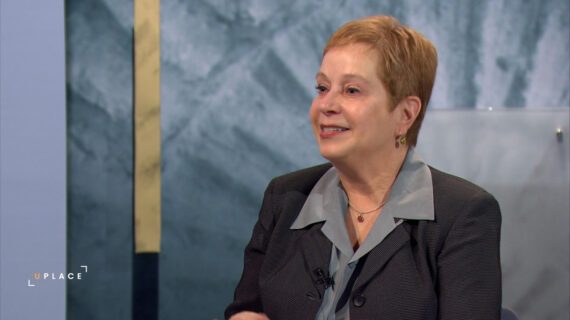

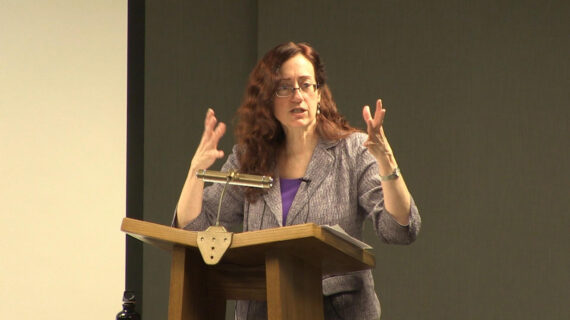
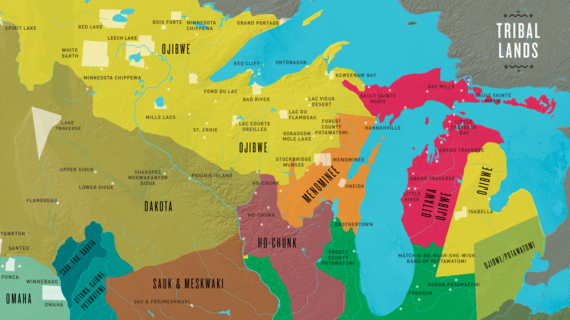
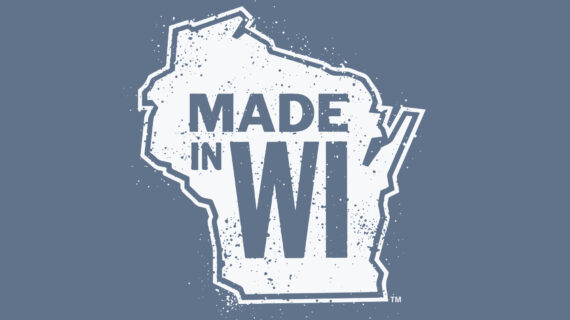

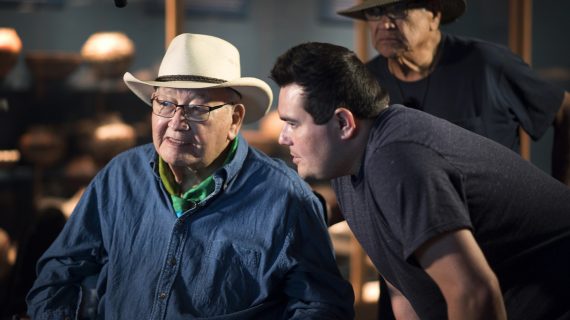


Follow Us